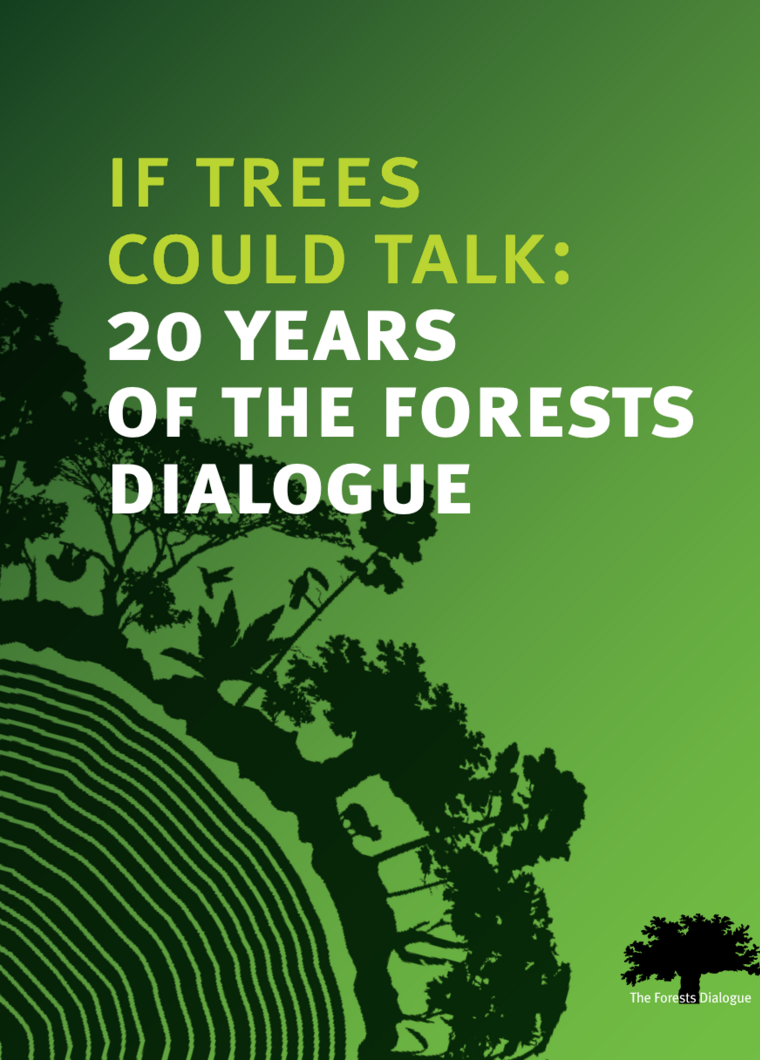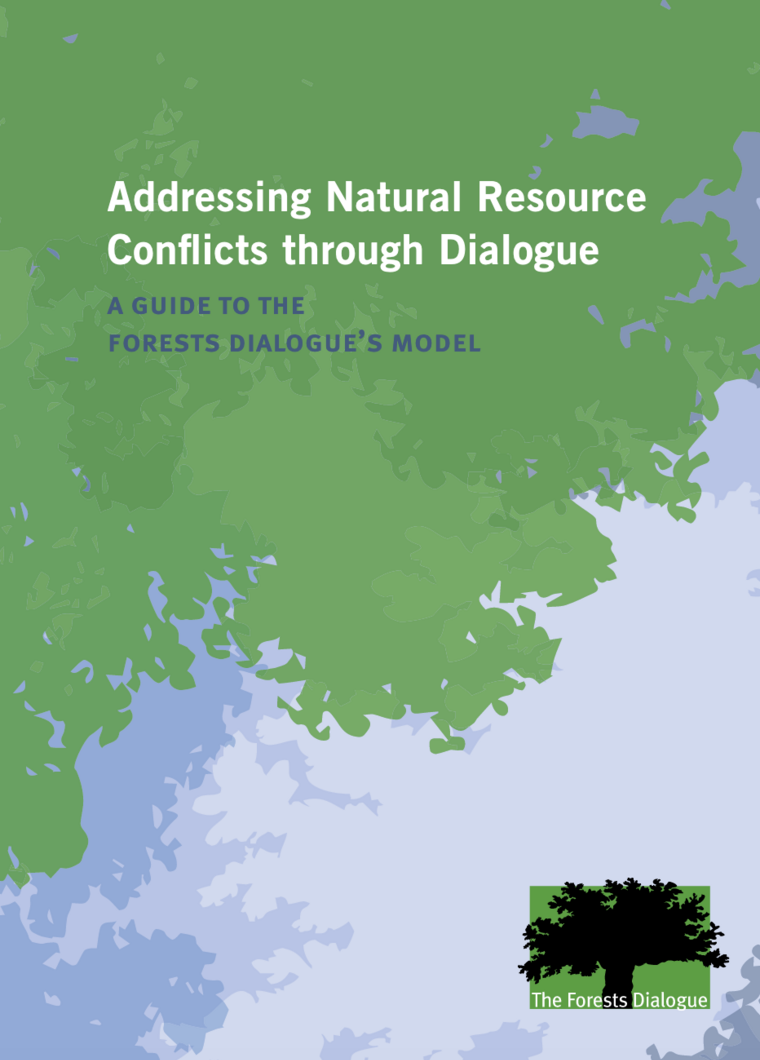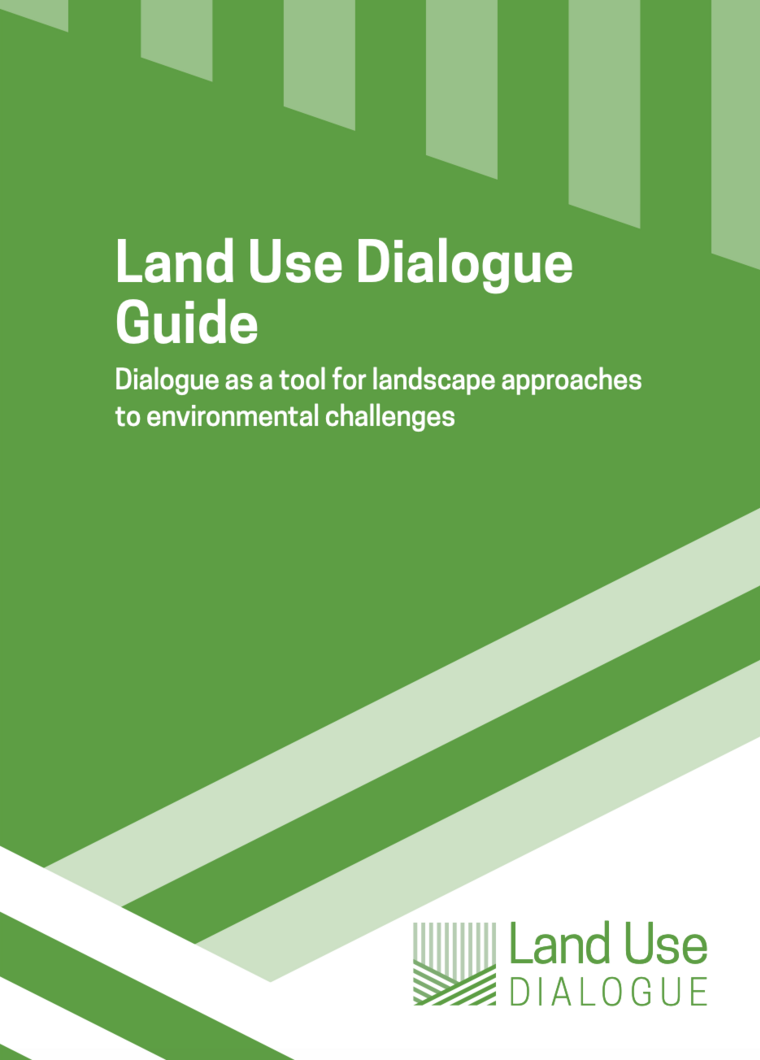Publications
The Forests Dialogue produces and publishes a variety of documents - maintained in a comprehensive library below. The majority of TFD publications are developed through TFD’s initiative process, including the following major publication types. In the lead-up to an initiative, a foundational Scoping Paper is produced to provide context for the scoping dialogue. Background Reports that provide stakeholders with relevant location-specific content are created for each subsequent dialogue following the scoping dialogue. At the conclusion of a dialogue, the co-chairs, with help from the TFD secretariat, produce a Co-chairs’ Summary Report that captures the key perspectives, discussions, agreements, and next steps from the dialogue. At the conclusion of an initiative, the Advisory Group, co-chairs, select leaders, and the Secretariat synthesize the initiative’s conclusions into a TFD Review. Additionally, Country Reports that aggregate learnings from a number of country-specific dialogues are typically produced for initiatives that involve numerous country-level dialogues, including TFD’s REDD+ dialogues. TFD also facilitates the production of guides and policy recommendations including a guide to the TFD process, the Land Use Dialogue methodology. These are geared towards practitioners or policy makers and contain actionable steps that stakeholders can take to enact change based on learnings gathered through the TFD process.
Navigate TFD’s extensive publication database using the search function below, or visit specific dialogue or initiative pages to see their associated publications.
In Nepal, local communities have come a long way in conserving forest ecosystems and nurturing local institutions for democracy and social justice in Nepal.
Building upon the consensus statement developed in 2008, which now enjoys a wide degree of support among leaders in the forest community, The Forests Dialogue (TFD) has initiated a series of multi-stakeholder dialogues on REDD (Reducing Emissions from Deforestation and Forest Degradation) Finance Mechanisms with a view to:
Every time he walks into the forest, my grandfather says “a dialogue about forests is a dialogue with our brothers the trees. We must ask the trees and Mother Earth permission to take the day’s livelihood from them.” To speak about indigenous peoples and their lands is to speak about history, and to do so from a cultural perspective. But this conversation is not yet possible.
Building upon the consensus statement developed in 2008, which now enjoys a wide degree of support among leaders in the forest community, The Forests Dialogue (TFD) has initiated a series of multi-stakeholder dialogues on REDD (Reducing Emissions from Deforestation and Forest Degradation) Finance Mechanisms with a view to:
On June 9–10, 2009, The Forests Dialogue convened a scoping dialogue to discuss how investment in locally controlled forestry can be improved both in the global north and global south.
The TFD Steering Committee and GFP’s Catalytic Group have an interest in
exploring how investment in locally controlled forestry can be improved in
both the “global north” and the “global south”.
In this context, we are considering locally controlled forestry as the range of
actions to manage or grow forest resources and run small enterprises based
The success of REDD (Reducing Emissions from Deforestation and forest Degradation) in contributing to Climate Change mitigation in the post-Kyoto regime is contingent upon many factors. Primary among them is the design and implementation of a reliable, robust and predictable finance mechanism that is transparent, equitable and enjoys the support of key stakeholder groups.
The present document has been written as part of the dialogue on possibilities and challenges for forest stakeholders when mitigating climate change through REDD+ activities. The objectives of the TFD REDD Dialogue are to:
i. define the challenges and opportunities of the current financial mechanism options debated by the international community;
This paper aims to provide an overview of the current and proposed financial mechanisms for implementing REDD under the UNFCCC framework, and to identify fracture lines and commonalities between stakeholders over these mechanisms.
Despite significant advances in addressing global poverty over the last 100 years, eradicating poverty continues to remain a real challenge in many parts of the world (Figure 1). One area that has been the focus of much research and initiative is exploring the intersection between poverty and the environment. With respect to forests specifically,
commonly cited relationships include:




